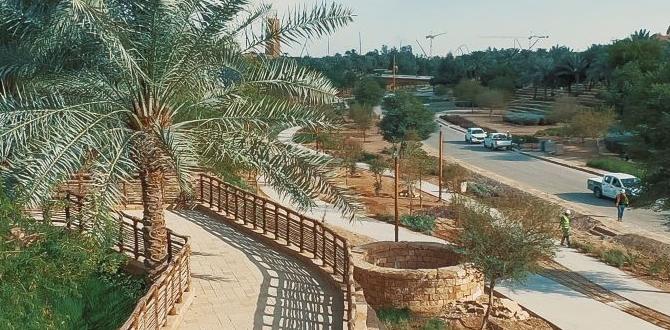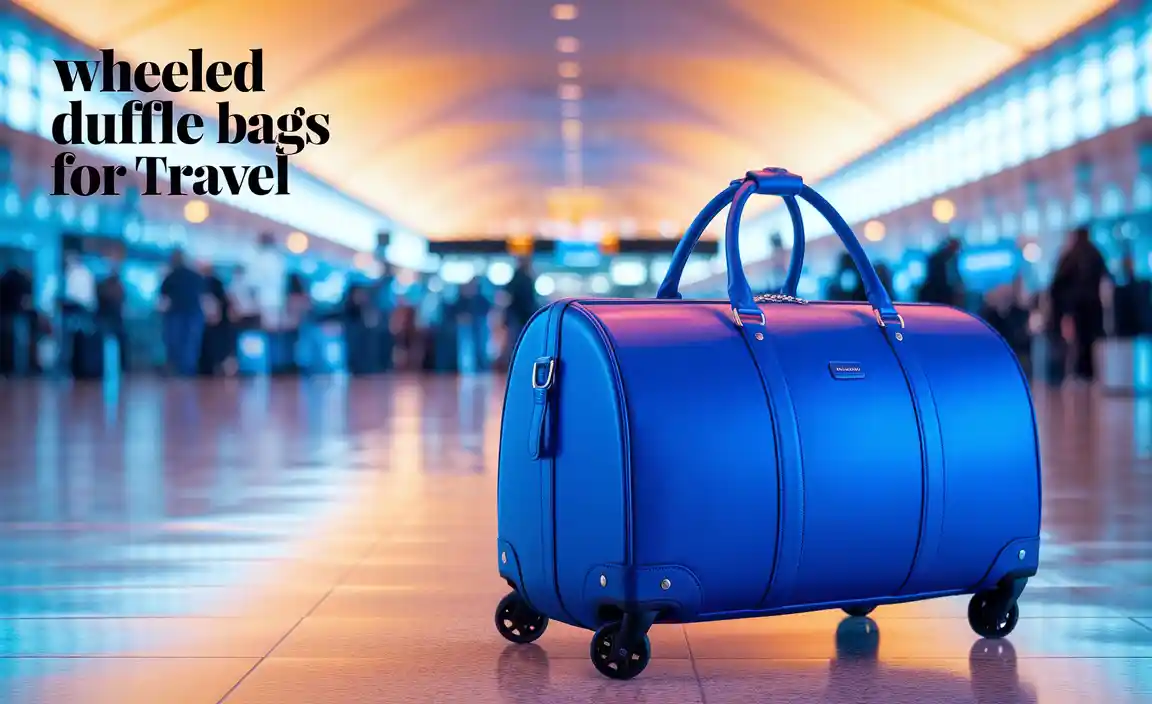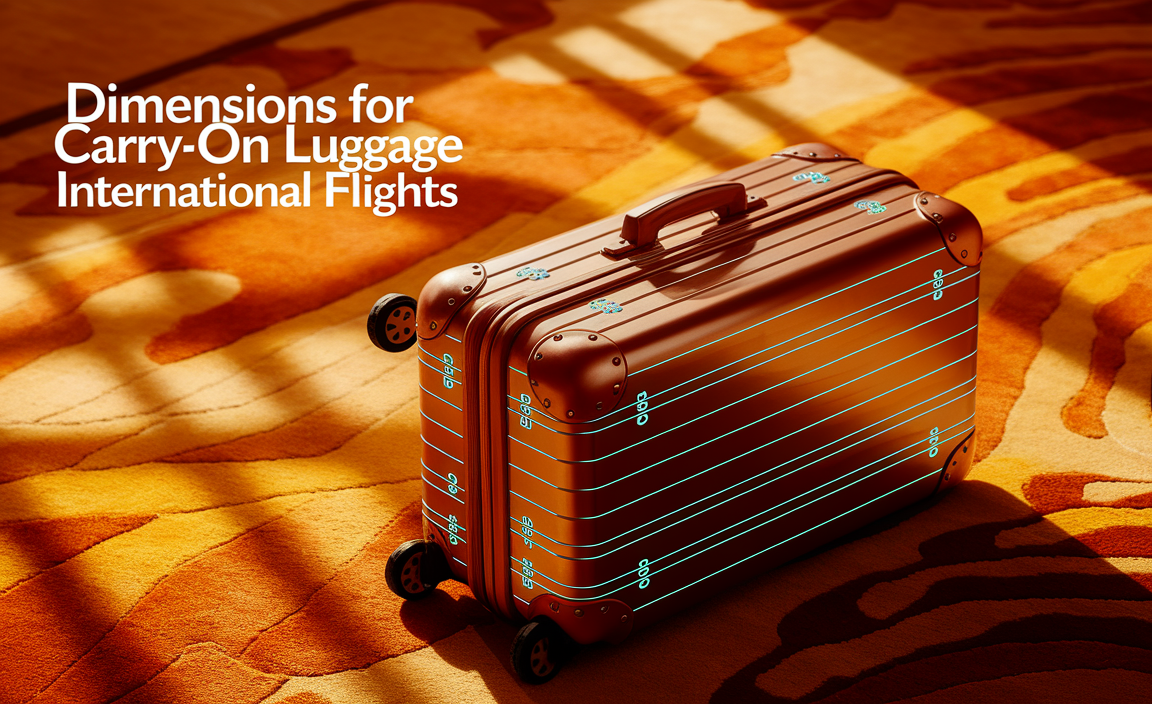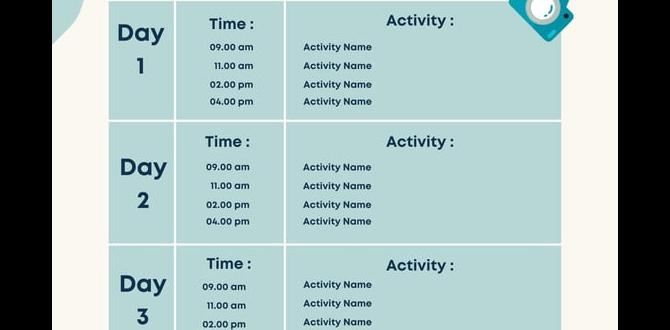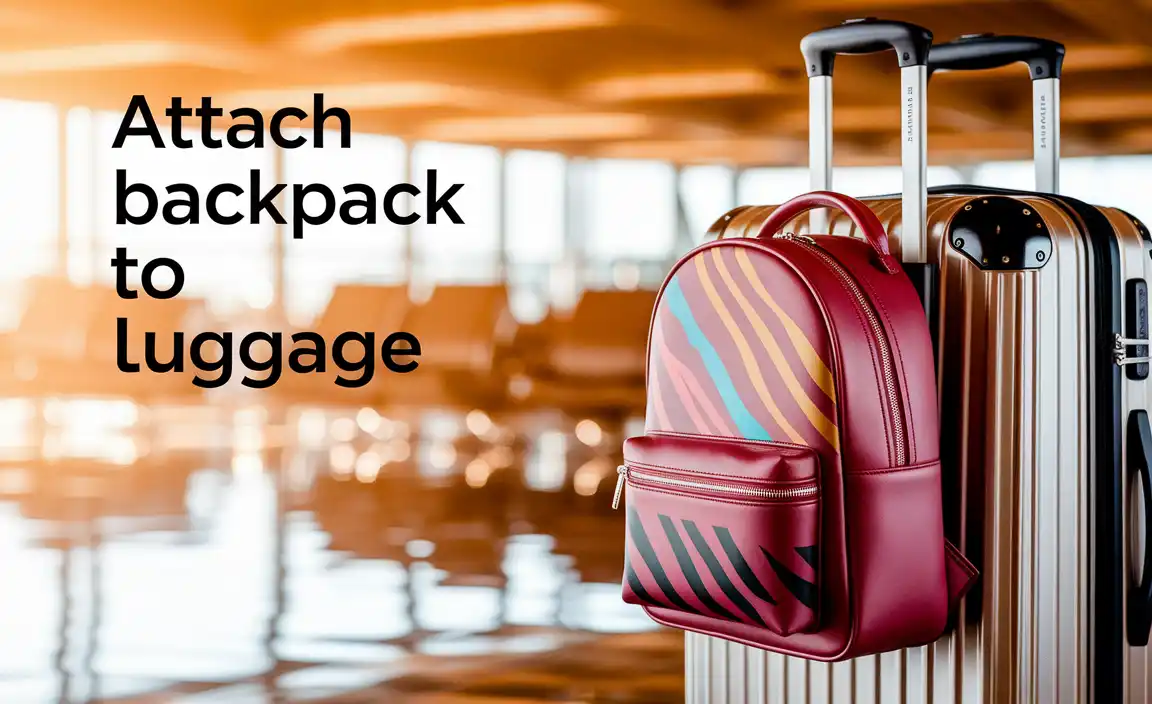Planning a Bohol shoulder season trip means enjoying fewer crowds and lower prices while still experiencing the island’s magic. This guide offers a practical, step-by-step plan to make your getaway smooth, comfortable, and unforgettable, covering everything from booking to packing.
Bohol Shoulder Season Trip Plan: Your Essential Guide
Dreaming of Bohol’s stunning beaches, unique landscapes, and vibrant culture, but dreading the usual tourist rush? Traveling during the shoulder season is your secret weapon for a more relaxed and rewarding experience. You get to see the same incredible sights without the long queues or the feeling of being constantly surrounded by crowds. It can feel a bit daunting to plan a trip during these less popular times, but that’s where this guide comes in. We’ll walk you through everything, step-by-step, so you can pack your bags with confidence. Get ready to discover a more serene Bohol!
Why Bohol Shoulder Season is Your Smart Travel Choice
The “shoulder season” refers to the travel periods just before or after the peak tourist season. For Bohol, this typically falls between the rainy months and the peak holiday rush, offering a sweet spot for many travelers. Think of it as getting the best of both worlds: great weather (mostly!) and a more authentic, laid-back vibe.
Choosing the shoulder season for your Bohol adventure offers a multitude of benefits:
- Fewer Crowds: Imagine exploring the Chocolate Hills without feeling like you’re in a queue, or enjoying Panglao’s beaches with plenty of space to yourself.
- Lower Prices: Flights, accommodations, and even some tours can be significantly cheaper during these periods, stretching your travel budget further.
- More Authentic Experience: With fewer tourists, you’re more likely to connect with local culture and businesses in a genuine way.
- Pleasant Weather: While it’s not guaranteed to be sunshine all day, the shoulder season often presents a good balance, avoiding the heaviest rains and the intense heat of the peak summer months.
Understanding Bohol’s Shoulder Seasons
Bohol, like many tropical destinations, has distinct weather patterns. Understanding these will help you choose the best shoulder season for your kind of trip.
The common tourist seasons to avoid (or embrace for different reasons) are:
- Peak Season: Generally from December to April, coinciding with drier, sunnier weather and major holidays (Christmas, New Year, Easter). This is when prices are highest and crowds are largest.
- Rainy Season: From June to October, with the heaviest rainfall often in July and August. While you might get more rain, you’ll also find the lowest prices and fewest tourists during this period.
The sweet spot, the shoulder seasons, typically are:
- Late April to May: The tail-end of the dry season. You’ll often find good weather with fewer crowds than during April holidays.
- September to November: The transition period as the rainy season winds down. While occasional showers are possible, days are often sunny, and the landscape is lush and green. This is arguably the best overall shoulder season for weather and fewer people.
For this guide, we’ll focus on the September to November shoulder season as it beautifully balances good weather potential with noticeably fewer tourists, making it ideal for a peaceful exploration.
Your Step-by-Step Bohol Shoulder Season Trip Plan
Let’s break down how to plan your perfect Bohol getaway during the shoulder season. Follow these steps for a stress-free experience.
Step 1: Define Your Travel Dates and Budget
Even within shoulder season, specific weeks can influence prices. Generally, September, October, and November weekdays will be cheaper than weekends or any local holidays that might fall within these months. Decide on your exact travel window, keeping in mind that flexibility can lead to better deals.
Consider your budget for flights, accommodation, food, activities, and transportation. Shoulder season deals can free up more of your budget for experiences or a slightly nicer hotel.
Step 2: Book Your Flights
Booking flights in advance is always a good strategy. For shoulder season, you might have longer to wait for flash sales, but monitoring prices will pay off. Use flight comparison websites and set price alerts.
Pro Tip: If you’re traveling with young children or require specific comfort items like adult diapers for longer journeys, book your flights early to ensure you can make any necessary arrangements with the airline, such as seating preferences or accessibility services. This also gives you time to pack these essential items without last-minute stress.
Step 3: Secure Your Accommodation
This is where shoulder season truly shines! You’ll have your pick of fantastic resorts, boutique hotels, and cozy guesthouses, often at significantly reduced rates. Think beachfront bungalows or charming villas without the premium price tag.
When choosing your stay:
- Location: Consider if you want to be close to the main tourist hubs like Panglao or prefer a quieter escape.
- Amenities: Look for places that offer the comfort and convenience you desire, especially if traveling with family.
- Reviews: Read recent reviews to get a feel for the atmosphere and service, especially during less busy periods.
Booking platforms like Booking.com or Agoda are excellent resources. You can often find great deals by booking directly with hotels too, especially if you inquire about special shoulder season rates.
Step 4: Plan Your Itinerary (But Stay Flexible!)
Bohol offers diverse attractions. Pinpoint the must-sees for you, but don’t overschedule. The beauty of shoulder season is the ability to be spontaneous.
Must-visit attractions include:
- Chocolate Hills: Bohol’s iconic geological formations.
- Tarsier Sanctuary: See the adorable, miniature primates.
- Loboc River Cruise: Enjoy lunch as you float through lush scenery.
- Panglao Island Beaches: Alona Beach, Dumaluan Beach, and Libaong Beach offer sun, sand, and sea.
- Baclayon Church: One of the oldest stone churches in the Philippines.
- Man-Made Forest: A scenic drive through towering mahogany trees.
- Panglao Beaches: Alona Beach, Dumaluan Beach, and Libaong Beach offer sun, sand, and sea.
- Anda (East Bohol): For pristine, less-visited beaches and caves.
Consider day trips and activities like:
- Diving or snorkeling (Balicasag Island is a marine sanctuary worth visiting).
- Island hopping to nearby Cabilao or Balicasag.
- Exploring caves like Hinagdanan Cave.
- Relaxing beach days.
Having a rough plan allows you to book any specific tours or activities that might require advance reservation, but also leave room for leisurely exploration and unexpected discoveries.
Step 5: Arrange Transportation
Getting around Bohol is part of the adventure! Options include:
- Motorcycle/Scooter Rental: Ideal for flexibility and exploring at your own pace, especially around Panglao and inland. Ensure you have the appropriate license and insurance.
- Tricycles: Great for short trips within towns or to nearby attractions.
- Habal-habal (Motorcycle Taxis): For solo travelers covering longer distances.
- Car Rental with Driver: The most comfortable option for families or groups, especially for longer day tours covering multiple attractions.
- Vans for Hire: Similar to car rentals with drivers, offering more space.
During the shoulder season, you might find it easier to negotiate prices for car or van rentals, especially if you book them through your accommodation or upon arrival.
Step 6: Pack Smart for Comfort and Preparedness
Packing is crucial for a comfortable trip, especially when traveling with specific needs. For Bohol’s tropical climate and varied activities, here’s what to consider.
Clothing Essentials:
- Lightweight, breathable clothing (cotton, linen).
- Swimwear.
- A light jacket or sweater for cooler evenings or air-conditioned transport.
- Comfortable walking shoes or sandals.
- Sun hat and sunglasses.
- Rain jacket or poncho (just in case!).
Health and Personal Care:
- Sunscreen (high SPF).
- Insect repellent.
- Basic first-aid kit (band-aids, antiseptic wipes, pain relievers).
- Any personal medications.
- Comfort for All Ages: If personal care needs arise, especially for long travel days or extended excursions, packing discreet and reliable products is key. For parents traveling with children, having child diapers readily available ensures comfort and avoids accidents. Similarly, adults who may need adult diapers for extended flights, long day trips, or general peace of mind during their travels can find discreet, highly absorbent options. These products, easily sourced online before your trip and packed carefully, can significantly reduce travel-related anxiety and enhance overall comfort. Websites like Depend offer a range of products for adults, and many other brands cater to children’s needs.
Electronics and Documents:
- Phone and charger.
- Power bank.
- Camera.
- Copies of important documents (passport, booking confirmations).
- Universal adapter (if needed).
Miscellaneous:
- Reusable water bottle.
- Small backpack or day bag.
- Travel-sized toiletries.
Step 7: Embrace the Shoulder Season Vibe
Once you’re in Bohol, relax and soak it in! The shoulder season is about experiencing the island at its most tranquil. Engage with locals, savor the local cuisine, and take your time exploring. The slower pace is intentional and allows for deeper appreciation of Bohol’s beauty and culture.
Weather Expectations in Bohol Shoulder Season
While the shoulder season promises fewer crowds and pleasant conditions, it’s wise to have realistic weather expectations. The Philippine weather can be unpredictable. From September to November:
- Temperature: Expect warm to hot temperatures, typically ranging from 25°C to 32°C (77°F to 90°F). Humidity will be present.
- Rainfall: While not the peak of the rainy season, occasional afternoon showers or passing thunderstorms are possible. These are often brief and can cool things down pleasantly. The landscape will be beautifully green and lush.
- Sunshine: You’ll still enjoy plenty of sunny days, perfect for beach activities and sightseeing.
It’s always a good idea to check the weather forecast closer to your departure date and pack accordingly, leaning towards lightweight, quick-drying clothing.
Sample Bohol Shoulder Season Itinerary (5 Days)
This sample itinerary focuses on a mix of popular sights and quieter exploration, perfect for a shoulder season visit.
| Day | Morning | Afternoon | Evening |
|---|---|---|---|
| 1 | Arrive at Tagbilaran Airport (TAG). Transfer to your accommodation in Panglao. Settle in and relax. | Explore Alona Beach. Enjoy a swim or simply soak up the laid-back atmosphere. | Dinner at a beachfront restaurant on Alona Beach. |
| 2 | Countryside Tour: Visit the unique Chocolate Hills viewpoint. | See the Philippine Tarsiers at the Tarsier Sanctuary. Enjoy a Loboc River Cruise with lunch. | Return to Panglao. Enjoy a quiet dinner. |
| 3 | Beach Hopping: Visit Dumaluan Beach and Libaong Beach for calmer waters and fewer people. | Explore Hinagdanan Cave for a refreshing swim in its underground lagoon. | Sunset drinks and dinner in Panglao. |
| 4 | Option 1 (Adventure): Day trip for dolphin watching and snorkeling at Balicasag Island Marine Sanctuary (weather permitting). Rent a boat or join a tour. Ensure your boat operator adheres to maritime safety standards. | Option 2 (Relaxation/Culture): Visit Baclayon Church and the Bohol Bee Farm. Spend the rest of the day relaxing or exploring local markets. | Explore the culinary scene in Tagbilaran City or enjoy your last Bohol sunset. |
| 5 | Enjoy a final leisurely breakfast overlooking the ocean. | Last-minute souvenir shopping. Transfer back to Tagbilaran Airport for your departure. | Depart from Bohol. |
Tips for Traveling with Children During Shoulder Season
Traveling with kids can be a wonderful experience, and the shoulder season makes it even more manageable. The reduced crowds mean less stress navigating popular spots, and potential deals on family-friendly accommodations are a bonus.
- Pack Smart for Little Ones: Alongside the essentials like sunscreen and hats, ensure you have comfortable, easy-to-change clothing. For longer journeys or eventful days out, having a reliable supply of child diapers is a lifesaver, preventing meltdowns and keeping everyone more comfortable. Brands offering good absorbency and a secure fit are ideal.
- Snacks are Key: Pack a variety of non-perishable snacks. While you can find local treats, having familiar favorites can be a comfort for picky eaters.
- Prioritize Downtime: Don’t pack too much into each day. Schedule in time for naps, pool play, or just relaxing at the hotel to avoid overtiring the children (and yourselves!).
- Child-Friendly Activities: Bohol has many options, from gentle boat rides to beach play. The Tarsier Sanctuary and the Loboc River Cruise are usually big hits with kids.
- Safety First: Always supervise children closely near water and on busy paths. Consider a child identification bracelet with your contact details.
Solo Travel During Bohol’s Shoulder Season
Bohol is a fantastic destination for solo travelers year-round, but the shoulder season adds an extra layer of ease and safety.
- Safety: With fewer people around, you can often feel a greater sense of calm. However, always remain aware of your surroundings and trust your instincts. Stick to well-traveled paths and busy areas at night.
- Affordability: Shoulder season deals can make solo travel much more budget-friendly.
- Ease of Movement: Getting around via tricycles or renting a scooter is often simpler due to less traffic.
- Meeting People: While fewer tourists mean a quieter atmosphere, you’ll still find opportunities to connect with other travelers in guesthouses, hostels, or on organized tours.
- Personal Comfort: For solo adults who might require discreet personal care items, having adult diapers for longer travel days or excursions offers peace of mind and freedom to explore without worry.
Frequently Asked Questions (FAQs)
Q1: What are the best months for Bohol’s shoulder season?
The sweet spot for Bohol’s shoulder season is generally from September to November. You can also consider late April to May, though this can sometimes overlap with local holidays.
Q2: Will it rain a lot during the September-November shoulder season?
While it’s the end

